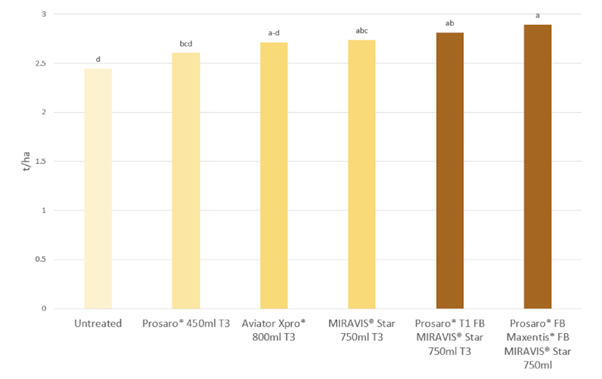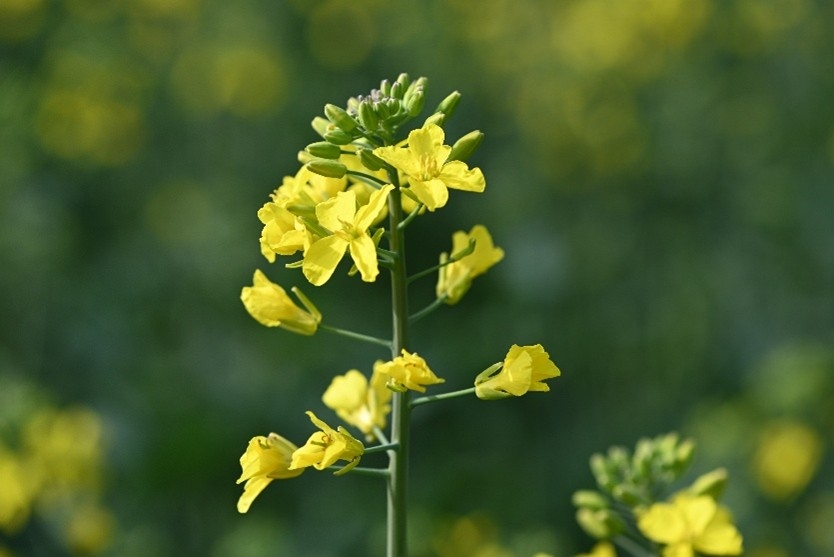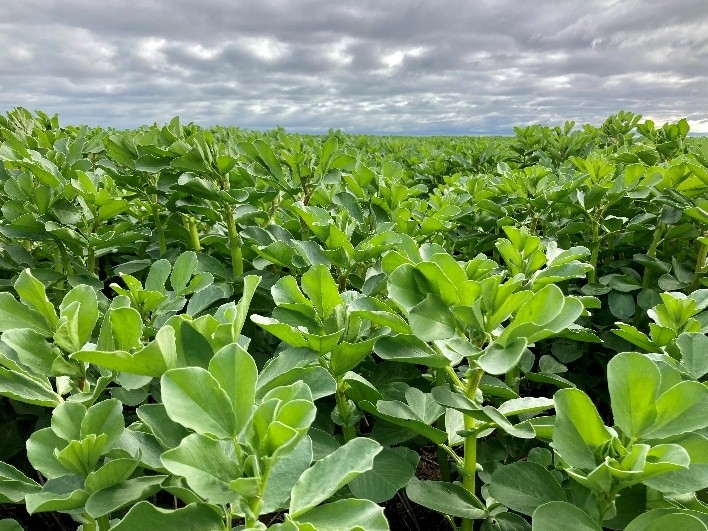From pulses to canola, Miravis Star fungicide has proven its worth in recent seasons, with extended residual protection against diseases and a strong return on investment.
Trial work has demonstrated up to six weeks of protection in pulse crops, giving growers a substantial improvement on existing options.
Dependable pulse crop protection
Offering exceptional protection against key pulse foliar diseases, Miravis Star is registered in lentils, chickpeas, field peas, vetch and faba beans.
Miravis Star is a unique co-formulation of Group 7 (pydiflumetofen) and Group 12 (fludioxonil) modes of action.
It has demonstrated outstanding efficacy against ascochyta blight, sclerotinia, chocolate spot, botrytis rot and cercospora leaf spot in their respective registered pulse crops.
Syngenta technical services lead Ashley Pilkington says trial results have shown excellent control with both aerial and ground applications, giving farmers flexibility in their application methods.
“The extended residual activity of Miravis Star is a game-changer for pulse farmers,” Ashley adds.
“It allows for better timing of applications and potentially reduces the number of sprays needed throughout the season,” he says.
“This extended control is attributed to pydiflumetofen's strong absorption into the leaf's waxy layer, which allows for longer lasting protection of the plant while the active moves into the leaf.”

Ashley believes Miravis Star is best positioned for application at canopy closure, a critical stage for disease prevention in pulse crops.
“This timing, combined with the product's long-lasting effects, provides growers with a powerful tool for managing disease pressure during crucial growth stages,” he says.
Miravis Star offers excellent value to growers.
“The long residual activity of the actives at a cost of less than $10 per hectare per week is a very good return on investment for growers,” he says.
The fungicide also boasts excellent compatibility with other crop protection products, allowing for easy integration into existing spray programs. Importantly, crop safety has been a key focus in the development of Miravis Star, ensuring minimal risk to the crop while maximising disease control.
To accommodate various disease pressure scenarios, Miravis Star offers a flexible use rate ranging from 250 mL to 1 L per hectare, with 500 mL to 750 mL/ha common use rates in the field depending on potential disease pressure.
This adaptability allows farmers to tailor their approach based on specific field conditions and disease forecasts.
Canola trial shows strong return on investment
The stellar performance of Miravis Star fungicide, boosting yields and returns, came to light in Western Australia during 2023.
The canola trial, conducted by Living Farm on behalf of Syngenta in Frankland River, demonstrated the value of this innovative fungicide for growers with the oilseed in their rotation.
When applied at the recommended rate of 750 mL/ha at 20 per cent flower stage, Miravis Star outperformed traditional fungicide options, yielding an extra 290 kg/ha above the untreated control.
This translated to an impressive return on investment of $141/ha, based on market prices.
Comparatively, the standard Prosaro treatment at 450 mL/ha yielded 160 kg/ha over the untreated control, providing a $71/ha return.
The stark difference in performance highlights the superior efficacy of Miravis Star in protecting canola crops during critical growth stages.
Ben Parkin, the Western Australian-based Syngenta technical services lead, emphasised the importance of strategic fungicide application in maximising yields.
“As we've seen in these trials, using tebuconazole plus prothioconazole at an earlier timing helps continue the early protection established with Saltro Duo seed treatment, before coming back with Miravis Star,” Ben explains.

“This rotation is proving particularly effective in medium to high rainfall production systems.”
One of the standout features of Miravis Star is its extended residual action, which has proven invaluable in unpredictable weather conditions.
Many growers reported a single application of Miravis Star was sufficient to carry their crops through the season, eliminating the need for a second fungicide treatment.
Additionally, it demonstrated superior compatibility compared to other SDHI fungicides, with reduced phytotoxicity.
This compatibility is particularly beneficial for growers who combine fungicide applications with nitrogen treatments at the 10–20 per cent flower stage.
The trial results also underscore the importance of adhering to resistance management strategies.
In line with CropLife recommendations, growers are advised to limit SDHI fungicide applications to a maximum of two per crop, rotating with different modes of action.
As Australian canola growers look to maximise their returns, Miravis Star presents a compelling option for those seeking to protect their yield potential under varying conditions.
With its proven performance in trials and commercial applications, Miravis Star has positioned itself as an essential tool in canola producers’ disease management arsenal.
Advisers interested in incorporating Miravis Star into their fungicide program are encouraged to speak with their local Syngenta representative.




